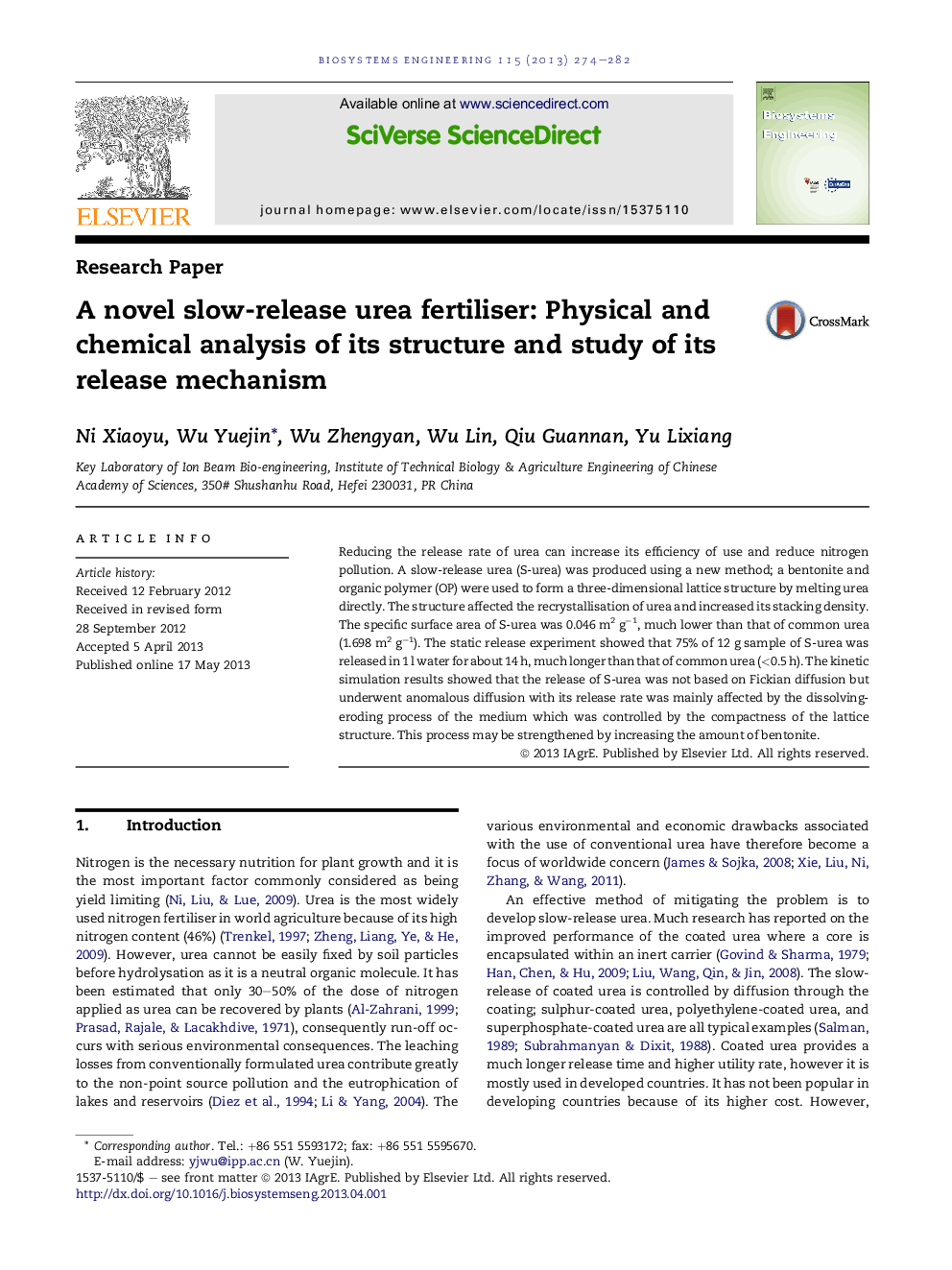| Article ID | Journal | Published Year | Pages | File Type |
|---|---|---|---|---|
| 1711328 | Biosystems Engineering | 2013 | 9 Pages |
Highlight•Slow-release urea (S-urea) was developed using a novel method with low cost.•A network structure was formed in melting urea that affected its recrystallisation.•S-urea with lower specific surface area had a lower release rate than common one.•Release rate of S-urea was mainly affected by the dissolving-eroding process.
Reducing the release rate of urea can increase its efficiency of use and reduce nitrogen pollution. A slow-release urea (S-urea) was produced using a new method; a bentonite and organic polymer (OP) were used to form a three-dimensional lattice structure by melting urea directly. The structure affected the recrystallisation of urea and increased its stacking density. The specific surface area of S-urea was 0.046 m2 g−1, much lower than that of common urea (1.698 m2 g−1). The static release experiment showed that 75% of 12 g sample of S-urea was released in 1 l water for about 14 h, much longer than that of common urea (<0.5 h). The kinetic simulation results showed that the release of S-urea was not based on Fickian diffusion but underwent anomalous diffusion with its release rate was mainly affected by the dissolving-eroding process of the medium which was controlled by the compactness of the lattice structure. This process may be strengthened by increasing the amount of bentonite.
Graphical abstractFigure optionsDownload full-size imageDownload as PowerPoint slide
